I’ve found that there are fundamental features ubiquitous across all systems, and others that are specialized for specific use cases. So, let’s take a closer look at cloud-based content management and some of the best systems out there you can try.
What is Cloud Content Management?
Cloud content management is a method of storing, organizing and managing digital content in a way that eliminates the need for local storage or on-premise servers. It does this by enabling the storage and access of content through the internet.
With cloud content management, you can use the cloud to securely store, access, update, and distribute content — whether it’s text, images, video, or other media types. Cloud content management also means multiple people can access content from anywhere at any time, rather than being tied to a physical location or device.
Cloud content management is facilitated by tools called cloud-based Content Management Systems (CMS). These platforms are third-party service providers hosted on remote servers and provide the capabilities for teams to create, edit, and distribute content at scale.
Benefits of Cloud Content Management
There are good reasons for adopting cloud-based content management. For example, I spend a lot of time collaborating with clients and their in-house teams on website content. A cloud-based CMS makes it much easier for us to work together and update the content as needed. Everything gets done faster and better at a fraction of the cost you would need for an on-premise version with the same capabilities.
Let’s take a deeper dive into the “why” beyond cloud content management.
Scalability
Cloud-based systems make it easy to scale your system capabilities alongside the amount of content you’re producing and managing.
Previously, with on-premise systems, you would have needed extra hardware and managing storage upgrades on a server. Now, although you might need to increase your subscription pricing tier every now and again, all the operational elements are handled by the cloud system provider.
Accessibility and Collaboration
With the cloud, you can access your content from anywhere. I’ve gotten used to signing into a platform and everything just being there in the app exactly as I left it. Before the cloud, this would have been location-dependent. You could only access your content on your computer, in your office through the organization’s in-house systems.
The same holds true for collaboration. When content is cloud-based, real-time editing and updating can be done by multiple people at once. Before, you would need to manually download and upload different versions.
Cost-Effectiveness
Think about the number of items you would have to source and manage without the cloud. Everything from server storage to security and physical infrastructure would be the organization’s responsibility. Plus, you would need a highly skilled internal team to manage it.
Cloud computing makes content management systems far more cost-efficient. Cloud providers and software-as-a-service (SaaS) companies that build and deploy the CMS handle all of this for you. This doesn't necessarily mean “cheap” (I’ve seen some monthly CMS subscription bills that have made my eyes water!), but it does mean a more efficient and predictable cost.
Updates and Maintenance
Technological progress is moving faster than ever these days. Many systems that were top-of-the-line five to ten years ago are already obsolete. Keeping up with these changes on in-house systems and infrastructure would be extremely costly and high-risk.
Cloud content management means all this research and development, along with things like system upgrades and bug fixes, are in the hands of your provider — and so are the costs that go with it.
Security
In a similar vein, system and data security has become increasingly important. Cloud providers invest a lot in security because it’s a critical selling point for customers. They leverage things like encryption and multi-factor authentication systems to keep access and data secure.
I tend to automatically think of hackers and bad actors when it comes to security. But it’s also about backups and version control. For example, if I’m working on a client website and something goes wrong, I know that the CMS has stored multiple versions of the page for me and it’s easy to reverse.
Similarly, if you were relying on an in-house system years before, you would need a backup plan in case your server failed. Everything would need to be backed up regularly in a very manual process, and even then, you’d risk losing important resources if a system failure occurred.
Content Distribution
A cloud-based system also makes it easy to quickly distribute content across multiple channels. Without this, you would have to manually upload content (and every new version of it) to multiple channels, making it time-consuming and costly. With a cloud-based CMS, you can push content and updates to your website, social media, mobile apps, and marketing emails from one place.
Let’s say I have an ebook that’s hosted in multiple locations, but it’s gotten a little outdated. With a cloud CMS, I can upload the newly designed version and automatically replace it across all distribution channels in one click.
Essential Features of a Cloud-Based CMS
Now that you know why cloud content management matters, let’s explore what to look for as you shop around. Here are features I found essential in a cloud-based CMS>
User-Friendly Interface
I know my way around some developer tools and development fundamentals. But, even then, a user-friendly interface makes everything much easier. CMS features, like drag-and-drop editors and the ability to use color selectors, takes the heavy lift out of content creation and editing.
Real-Time Collaboration
Whether it’s a written piece, a visual graphic or a combination of both, many content pieces pass through multiple hands during the creation process.
Cloud-based CMS’s usually enable real-time collaboration so that feedback and edits can be viewed simultaneously by multiple users. This makes the content creation process much faster and reduces error rates.
SEO Tools
Search Engine Optimization (SEO) is often the primary goal of a content piece, and it’s something I spend a lot of my time on. When it comes to SEO, search engines use a lot of the back-end code behind a website page to display content in search results.
Cloud CMS’s make it easy to access things like metadata so you can optimize your code with keywords and improve its visibility in search results. Sure, I could do this manually in the HTML. But, it would be extremely time consuming and is often not an accessible method for people with little or no coding experience.
Content Personalization
This is one of my favorite features in a cloud-based CMS. As the internet becomes more and more noisy, it’s increasingly difficult to make your content stand out from the crowd. Personalization adds that extra touch, so your emails get a higher open rate and your calls-to-action get a higher click rate.
Personalization tokens such as the user's name, organization, or location provide a more unique experience. You can even use behavior history or preferences to tailor the content itself. An example I use regularly would be follow-up emails to ecommerce customers based on their purchase history or products they recently viewed.
API Integrations
I find myself using more tools and apps these days than ever before. Anywhere that I can consolidate functionality in one place is a win for me and my clients.
API integrations in a cloud-based CMS enable you to connect tools and distribution channels into the CMS, so you spend less time hopping around between systems and manual processes. Examples would be connections to tools for email marketing, social media distribution, digital advertising platforms, CRMs, and analytics tools.
Automated Content Workflows
Previously, most of the time I spent on content creation was writing, building, and editing. But as content production has scaled up and advanced functionality like personalization has become common, there’s a lot of admin work that goes into keeping content creation and distribution organized.
I really appreciate the workflow automation commonly found in cloud-based CMSs. It’s helpful for everything from pre-publishing approval workflows to stamping contact records appropriately in the CRM and automating follow-up email nurturing. Automated workflows further boost productivity and help ensure your content’s performance is maximized.
Analytic and Reporting
The ability to report on performance and provide analytics is essential. Most CMSs come with built-in reporting tools and analytics dashboards, so it’s far easier to set up the dashboards I need and have regular reporting at my fingertips.
Best Cloud Content Management Systems
I’ve used a lot of cloud-based content management systems over the years, but here are a few of my all-time favorites and some new ones I recently tried out.
1. HubSpot’s Content Hub
HubSpot is one of the CMSs I use most frequently. There’s an easy-to-use drag-and-drop editor. Plus, you can choose from existing templates to save you time.
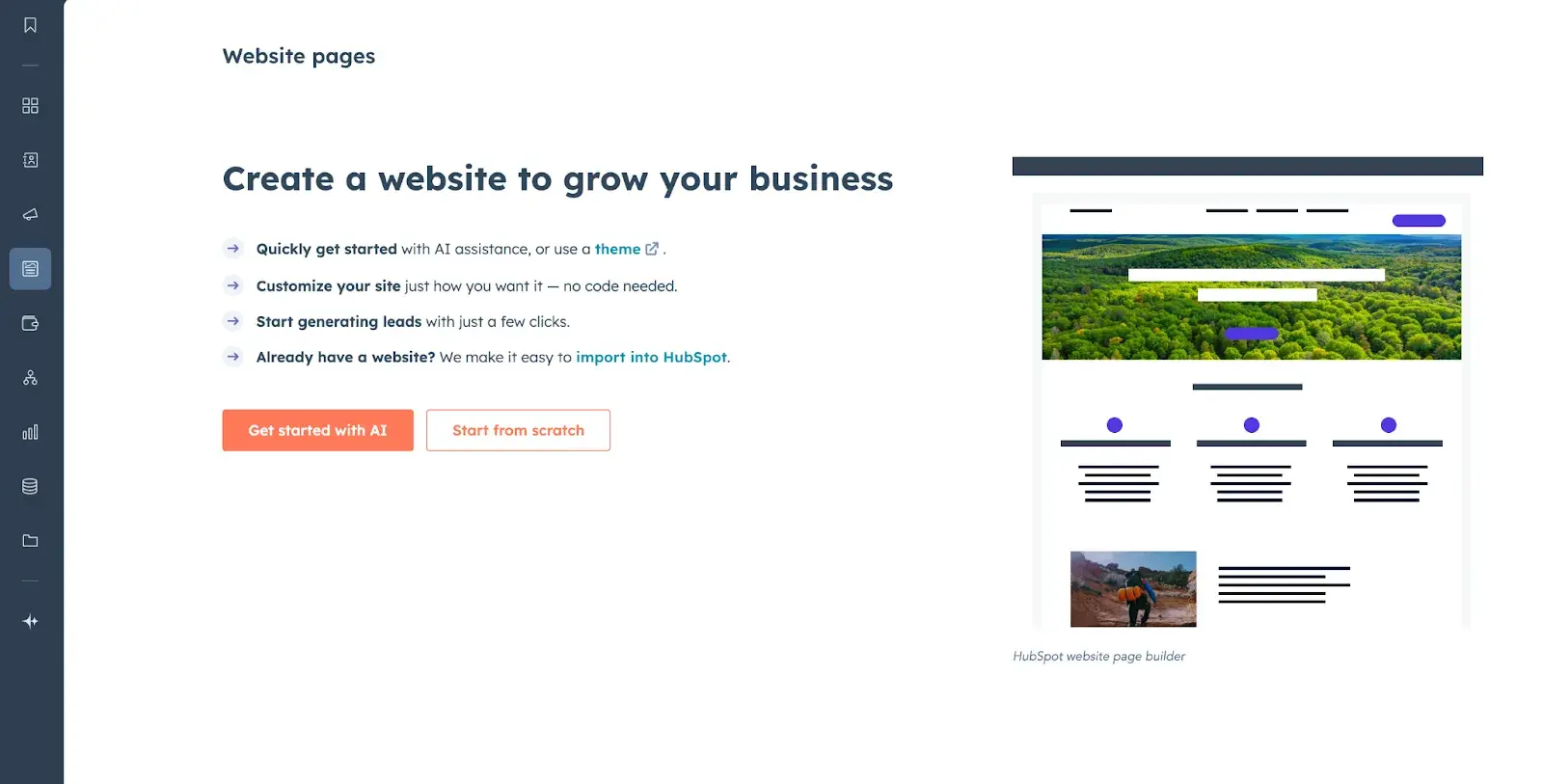
What’s particularly impressive is the level at which AI has been integrated into the CMS to speed up and optimize content creation. I can use the AI assistant CoPilot to help me pull a specific report, for example. I can also use AI to generate content ideas, write the content itself, and more.
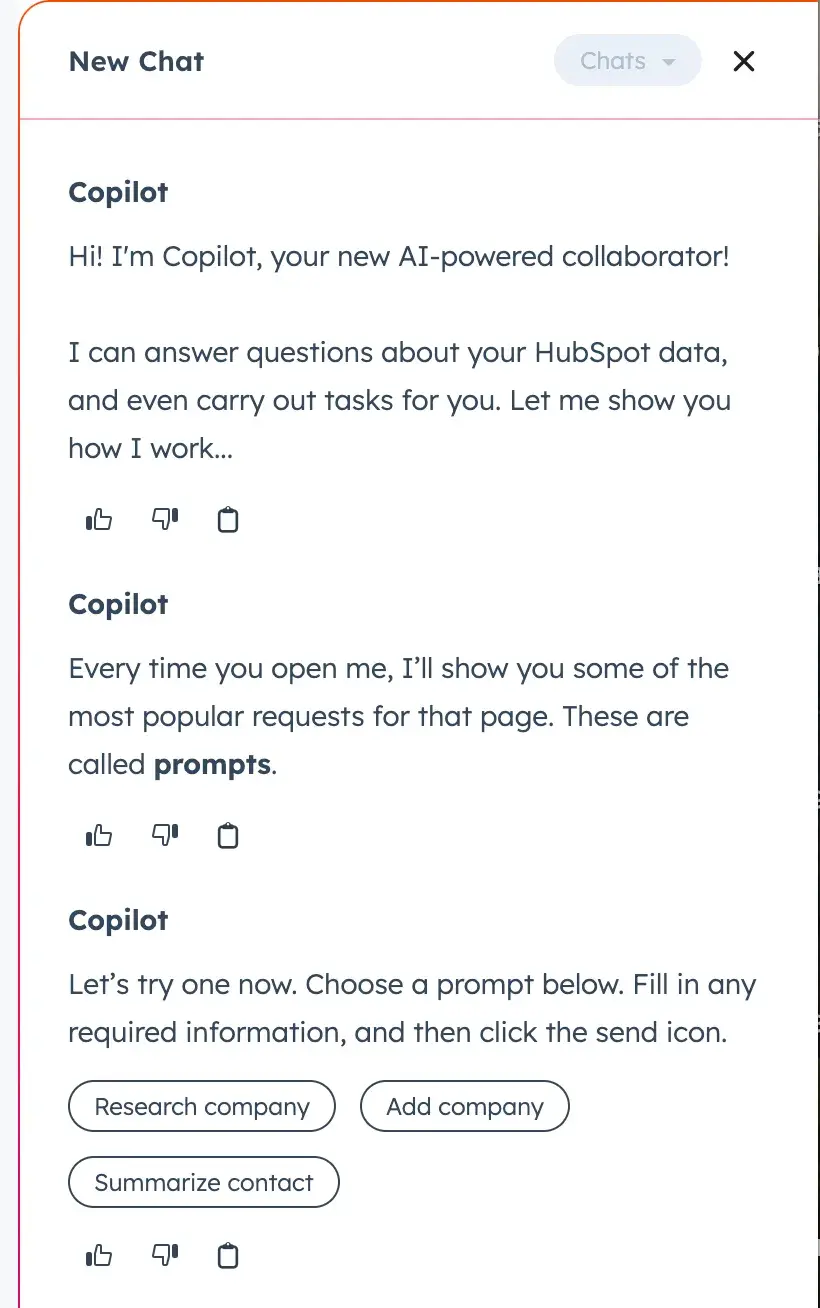
Features
- Drag-and-drop editor for easy creation and editing of content
- Built-in tools for SEO optimization
- Multi-channel publishing (including website, social media, and email)
- Automatically responsive templates for mobile optimization
- Detailed analytics and highly customizable dashboard building
- Built-in A/B testing capabilities
- AI capabilities integrated throughout
What I Like: What I love most about HubSpot’s CMS is the level of integration available across a huge range of tools and systems. Plus, if you also use HubSpot’s CRM, you get a seamless view of your entire sales and marketing lifecycle from content creation through to customer management. It makes personalization a breeze.
2. WordPress.com
WordPress.com is the paid cloud-based version of the famous WordPress CMS. It’s a fairly easy-to-use platform with scalable pricing depending on your feature and storage needs. I started a free plan with a free website template to check it out in more detail, which is a great option if you’re browsing different tools and want to see what it can do.

Features
- Out-of-the-box themes and templates
- User-friendly interface on a drag-and-drop visual editor
- Easy integration with analytics tools
- Built-in option for social sharing
- Multilingual support
- Large plugin marketplace for extra functionalities
What I Like: WordPress.com has integrated some AI capabilities to make writing and image generation easy. I tried both the writing prompts and the generative AI tools, and both were pretty impressive. Plus, if you’ve used WordPress blog editors regularly, the interface and editor will be very familiar and simple to navigate.
3. Wix
When I work with small businesses, I come across Wix quite a lot. It’s a very powerful CMS for personal websites and small businesses e. It might be lacking integrations compared to other options, but I like the interface and find it useful for getting simple website designs done quickly.
Wix recently upgraded their CMS interface to “Wix Studio,” which provided some nice changes to the interface. From the main dashboard, you can access not just the CMS but also your CRM and Automations.
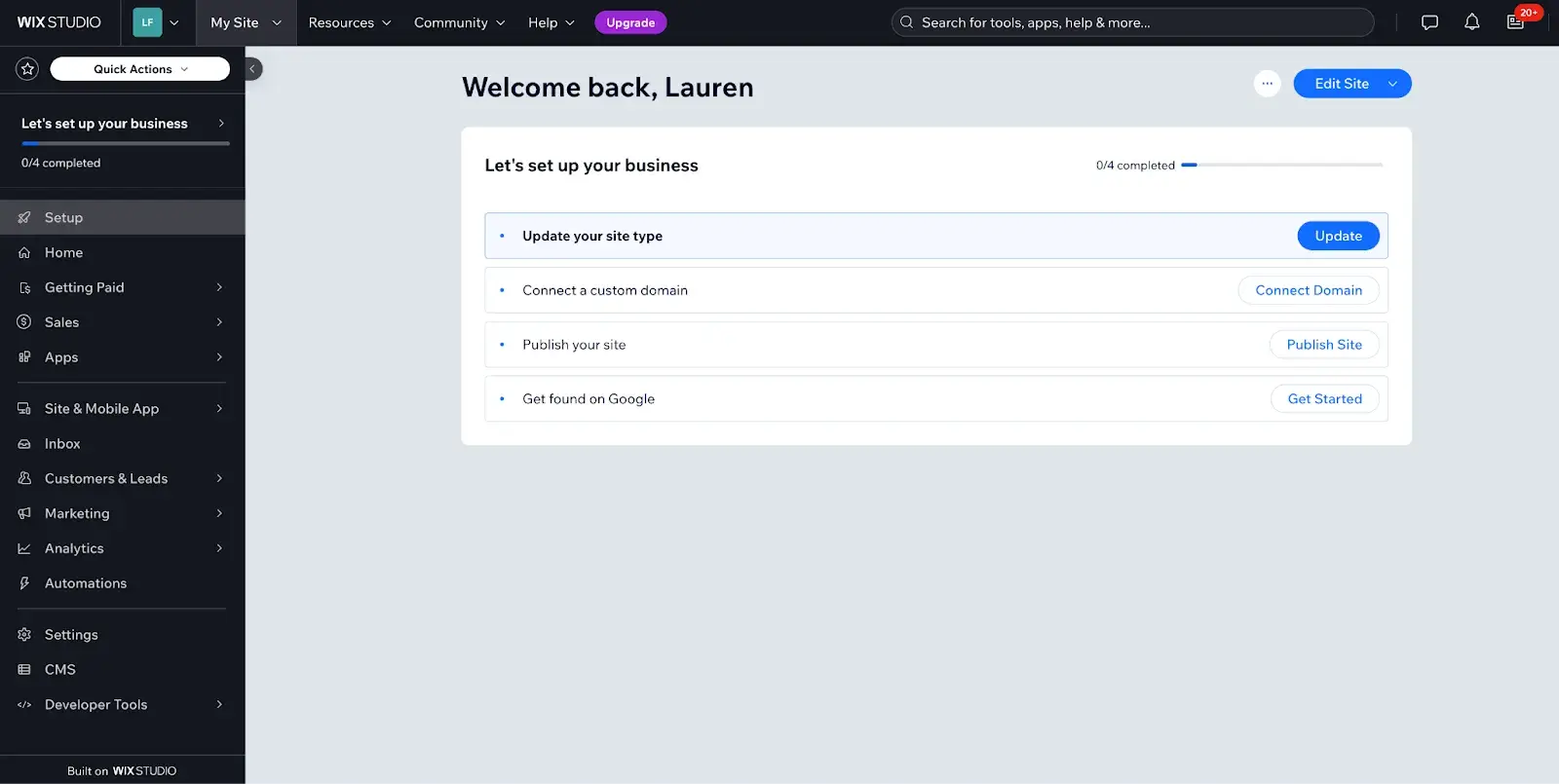
Features
- Library of customizable templates for both website pages and collections
- Mobile customization and built-in responsiveness
- Built-in eCommerce functionality on paid plans
- Sleek media galleries
- User-friendly blogging tools and SEO optimization
What I Like: Some of the core CMS functionality on Wix can be a bit basic. But I do like that you can switch to developer mode easily for even more flexibility. Also, the upgrade to Wix Studio means that you can use Collections to categorize and group content within your CMS more easily.
4. Contentful
Contentful is a headless CMS, meaning you can build and manage your content here and use a separate system entirely for designing the “front end” (or what your end users see in a browser). You can then use API integrations to deploy the content to your front end.
This type of CMS is mostly useful for sites with large amounts of content that need to be created and maintained consistently. I’d recommend Contentful for eCommerce sites, so that’s the template I chose when trying out Contentful.

The Contentful interface is very clean and sleek. But in terms of functionality, there’s definitely a learning curve.
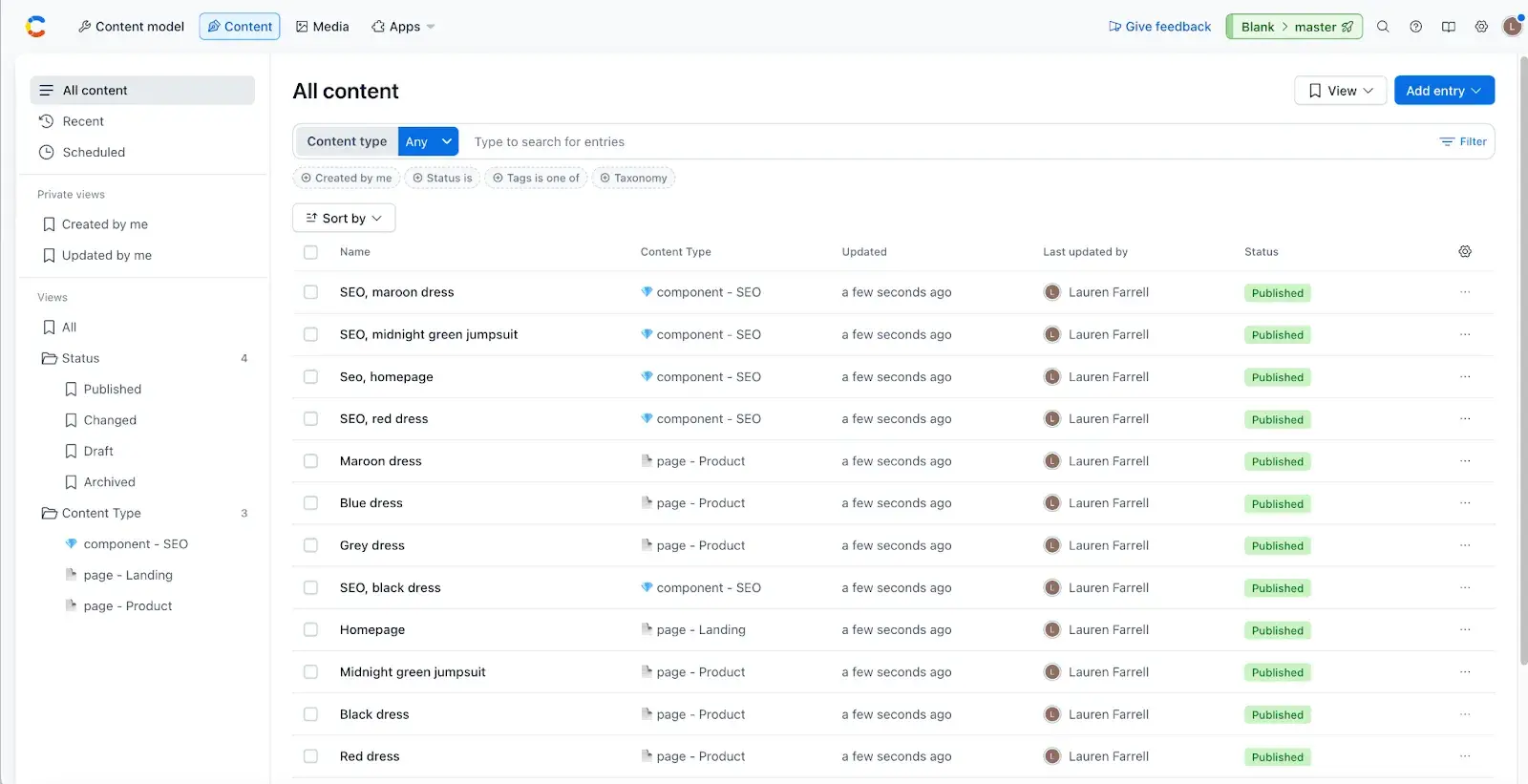
One of the main benefits is the ability to deploy content in mass based on location. So, if I were running an ecommerce site and had merchandise that’s available in one area but not another, it’s straightforward to make sure everything is organized and deployed correctly.
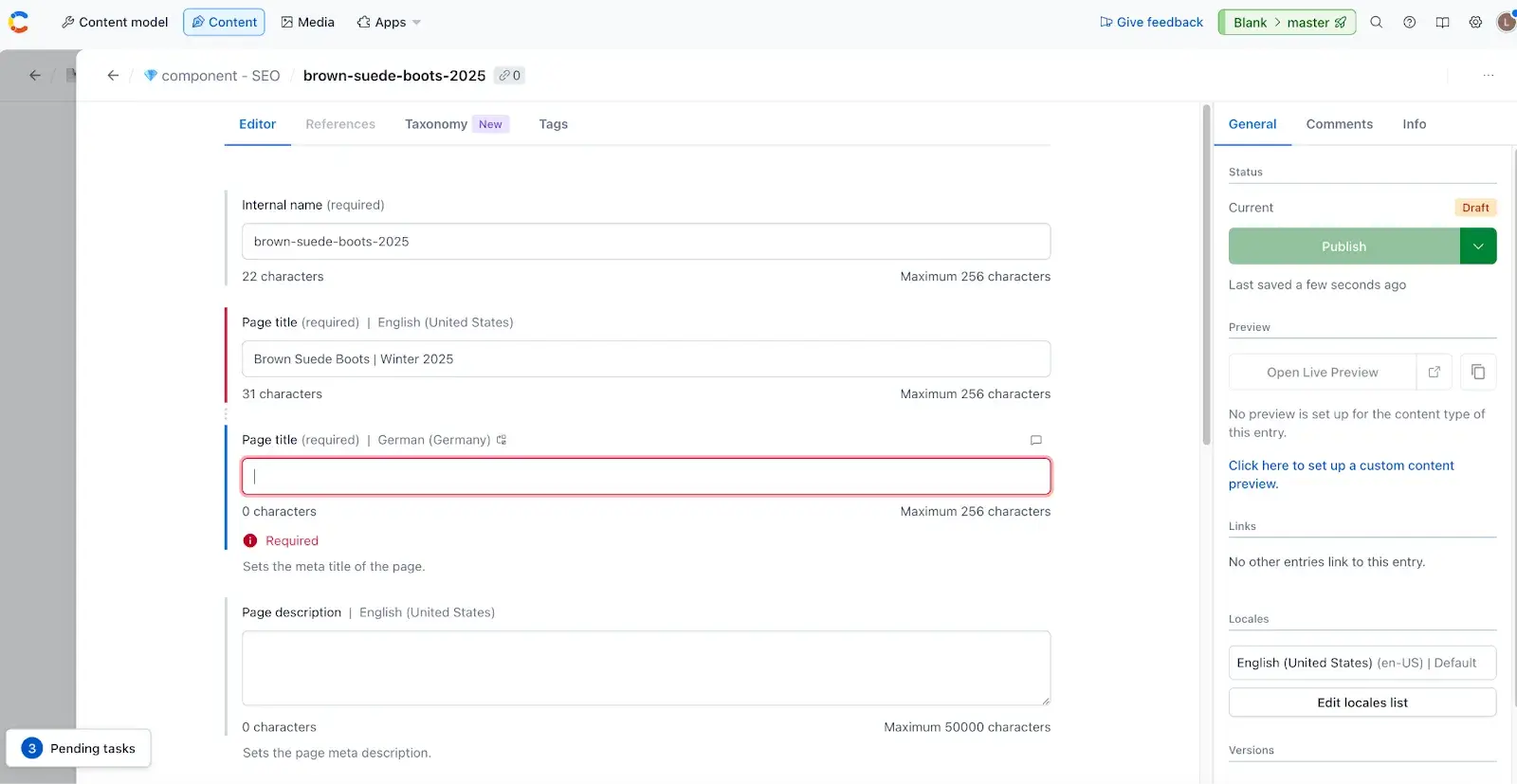
Features
- Multi-channel content delivery
- Detailed SEO customization and optimization
- Advanced permissions settings for teams and users
- Built-in version control and approval workflows
- Highly scalable
What I Like: I could instantly see the value of Contentful for content-heavy websites and large teams. If you’ve ever managed a website, you’ll know how quickly it can get messy, especially between multiple users. Contentful provides all the parameters you need and is flexible enough to work with a variety of use cases.
5. Sitecore
Sitecore is built for enterprise-level organizations. It promises a lot in terms of functionality, from personalization and advanced A/B testing to site search and marketing automation.
Unfortunately, there is no free trial available, and demos are only given on request. So, I relied on some YouTube videos, online reviews, and the Sitecore website to check it out.
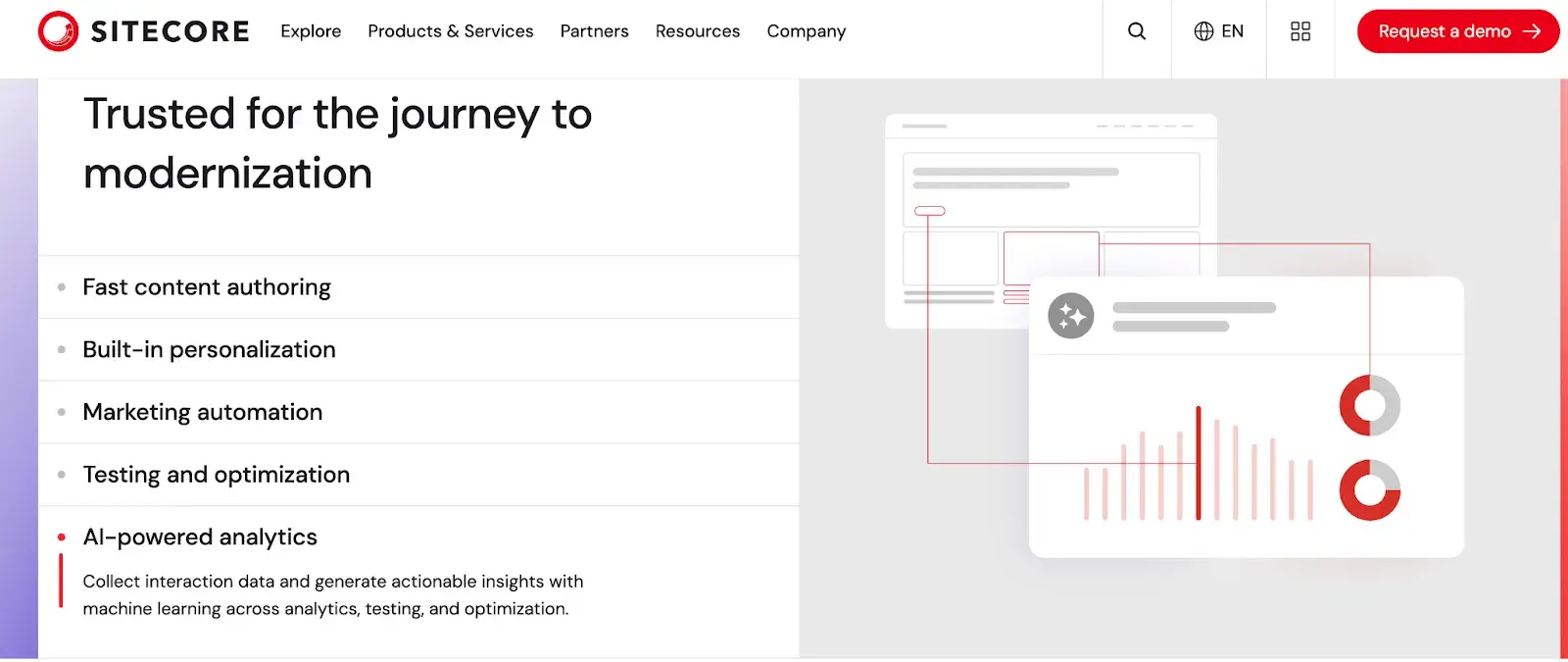
Sitecore seems like a next-gen CMS, and it’s not surprising that the case studies on its website are mostly from large, multinational organizations. It’s extremely flexible in its use cases, which shouldn’t be a problem for big companies with highly technical internal teams.
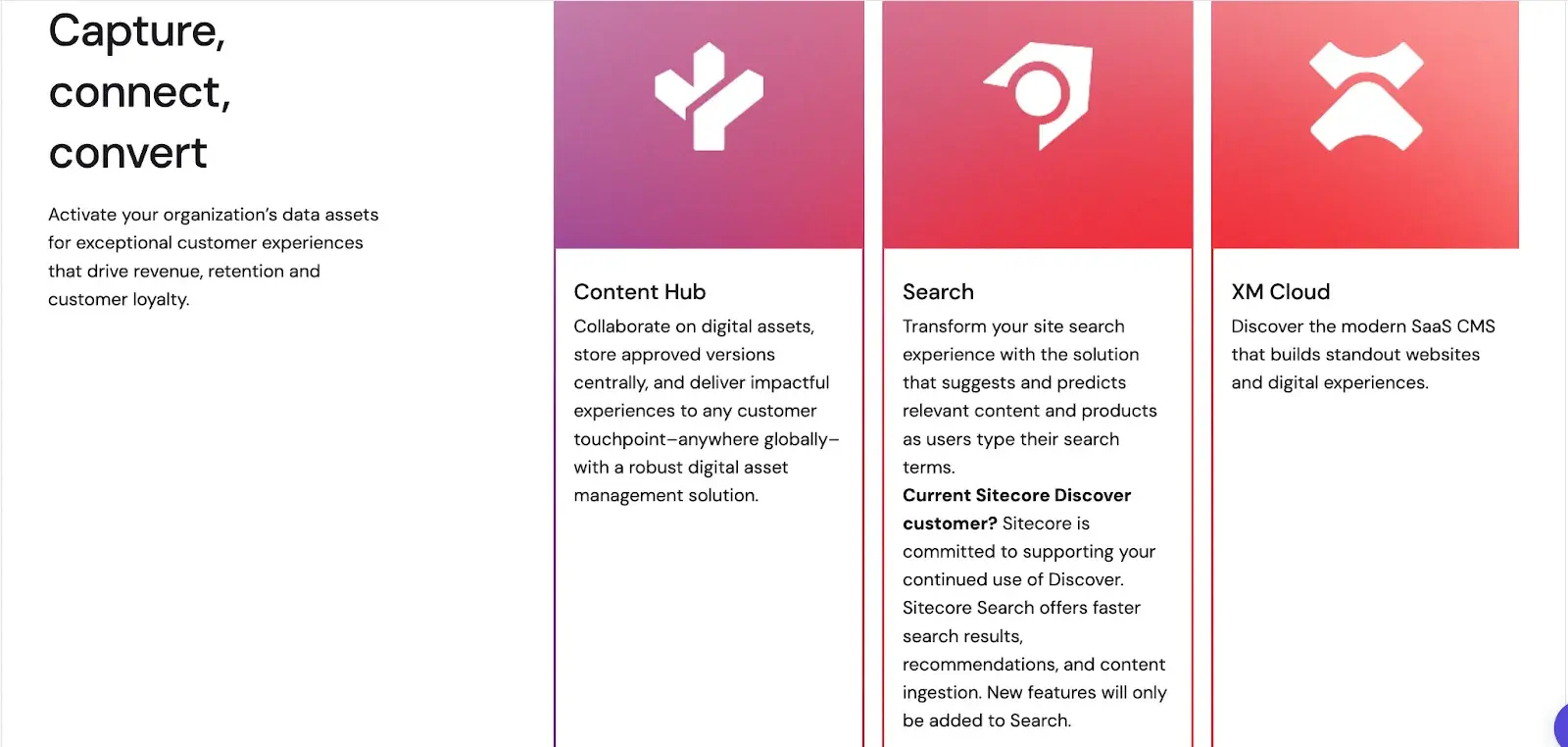
Features
- Advanced personalization in content creation and deployment
- Multi-channel content management and distribution
- AI-guided workflow creation and generative AI content creation
- Advanced marketing automation
What I Like: While it’s impressive, pricing is reported to be high from customers, so it’s definitely not ideal for small businesses or in-house teams.
6. Contentstack
Contentstack is another headless CMS, mainly designed for enterprise-level content creation and management. I started with one of their sample start websites to check out the platform in a bit more detail.
While Contentstack does have an impressive suite of features, I found it to have the most difficult learning curve out of the options on this list. If you want to use any pre-built modules or stacks, they need to be imported, which is quite slow.
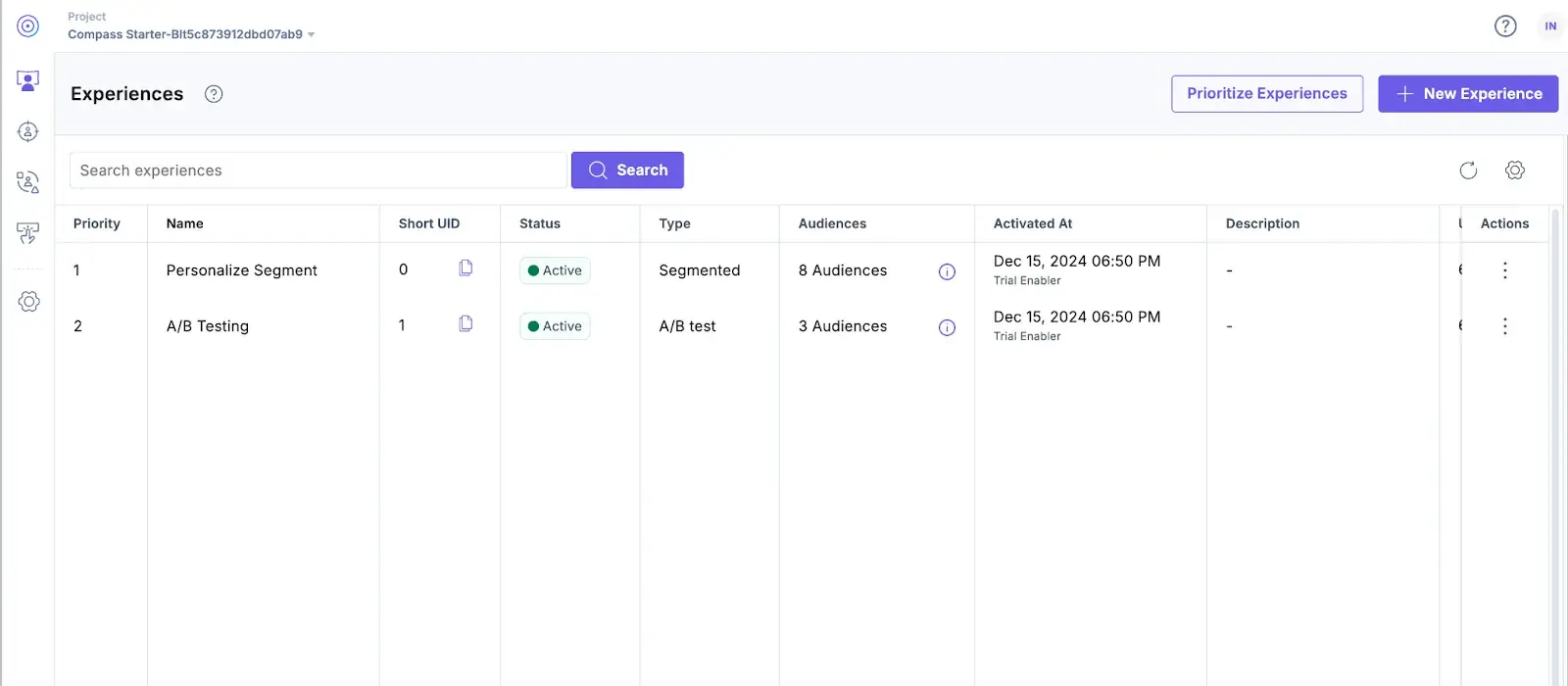
However, I did like the level of personalization features available. You can segment into highly specific audiences based on events or attributes for custom experiences or do advanced A/B and multivariate testing.
I also really liked the Automations features which, again, has a learning curve. Once you figure it out, you can automate a lot of publishing, personalization, and operational activities here.
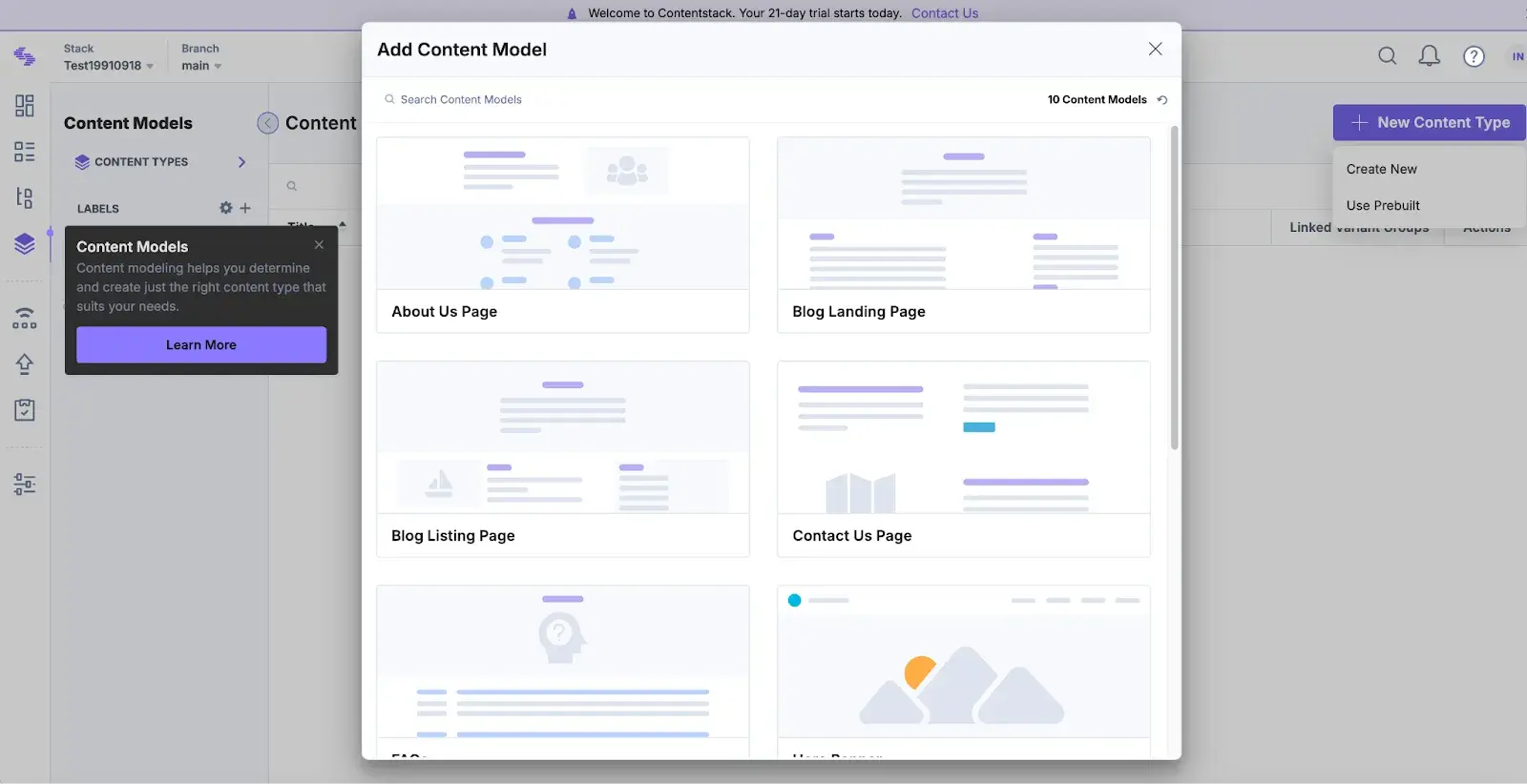
Features
- API-first structure for omnichannel content delivery
- Multi-language support for global content
- Built-in but customizable workflows for approvals
- Real-time collaboration
- Advanced content modeling
What I Like: If I had a project where highly detailed personalization and automations were top of mind, I would definitely come back to Contentstack. For large teams or marketers who want to build complex workflows, it’s got powerful functionality.
7. Webflow CMS
Webflow is a CMS I’ve used before, and I really like it on the whole. The new upgrade to Wix Studio that I mentioned above provides a similar interface to Webflow, and it’s also reminiscent of the Bubble app if you’re familiar.
Having never built a Webflow website from scratch, I tried out one of their free ecommerce templates to dig into its features.
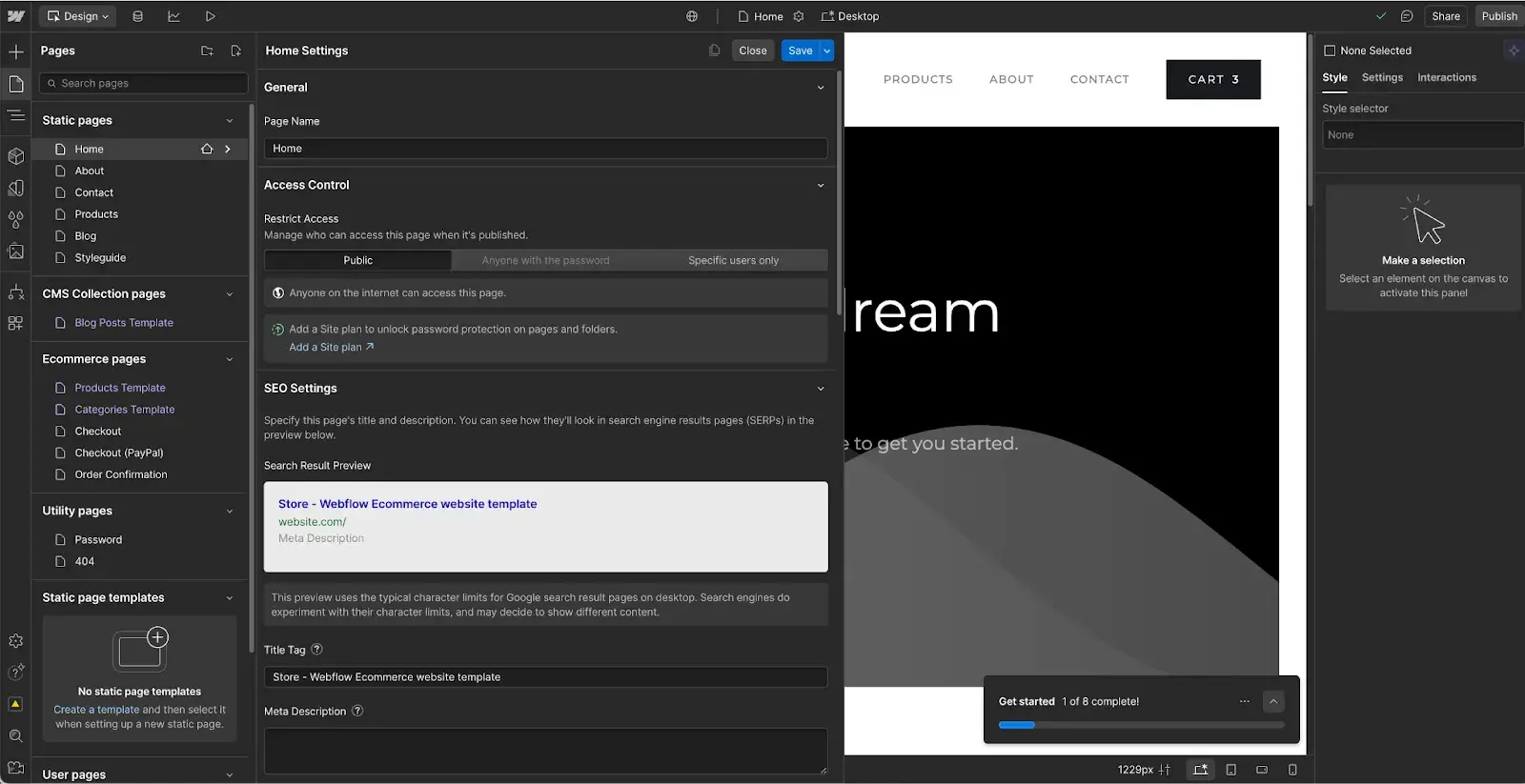
It was hard to take my previous experience out of the equation for this one. I do think if it’s your first time using Webflow (or with any CMS that has a similar interface), it will take you a little while to get familiar with the navigation. Some items, like SEO optimizations, are tricky to locate.
That being said, once you know where everything is, the level of functionality makes it worth the effort.
Features
- Integrated CMS for dynamic content
- Responsive templates for multiple devices
- Hosting and CMS integrated into one platform
- Easy visual editor and drag-and-drop builder
- Real-time collaboration and access controls for publishing
What I Like: Webflow has a really nice “Get Started” checklist that helps you customize your CMS with branding, content localization and more, while simultaneously getting you familiar with the platform.
The navigation can take a few minutes to figure out, but once you do, it’s easy to use. If you were building from scratch with an internal team, there’s almost every level of customization you would need.
8. Ghost CMS
Ghost is one of the more simple platforms on the list and is specifically designed for blog or article-based content. You can create an account and get up and running in Ghost’s headless CMS super fast with a nice step-by-step checklist at the beginning to customize designs and layouts.
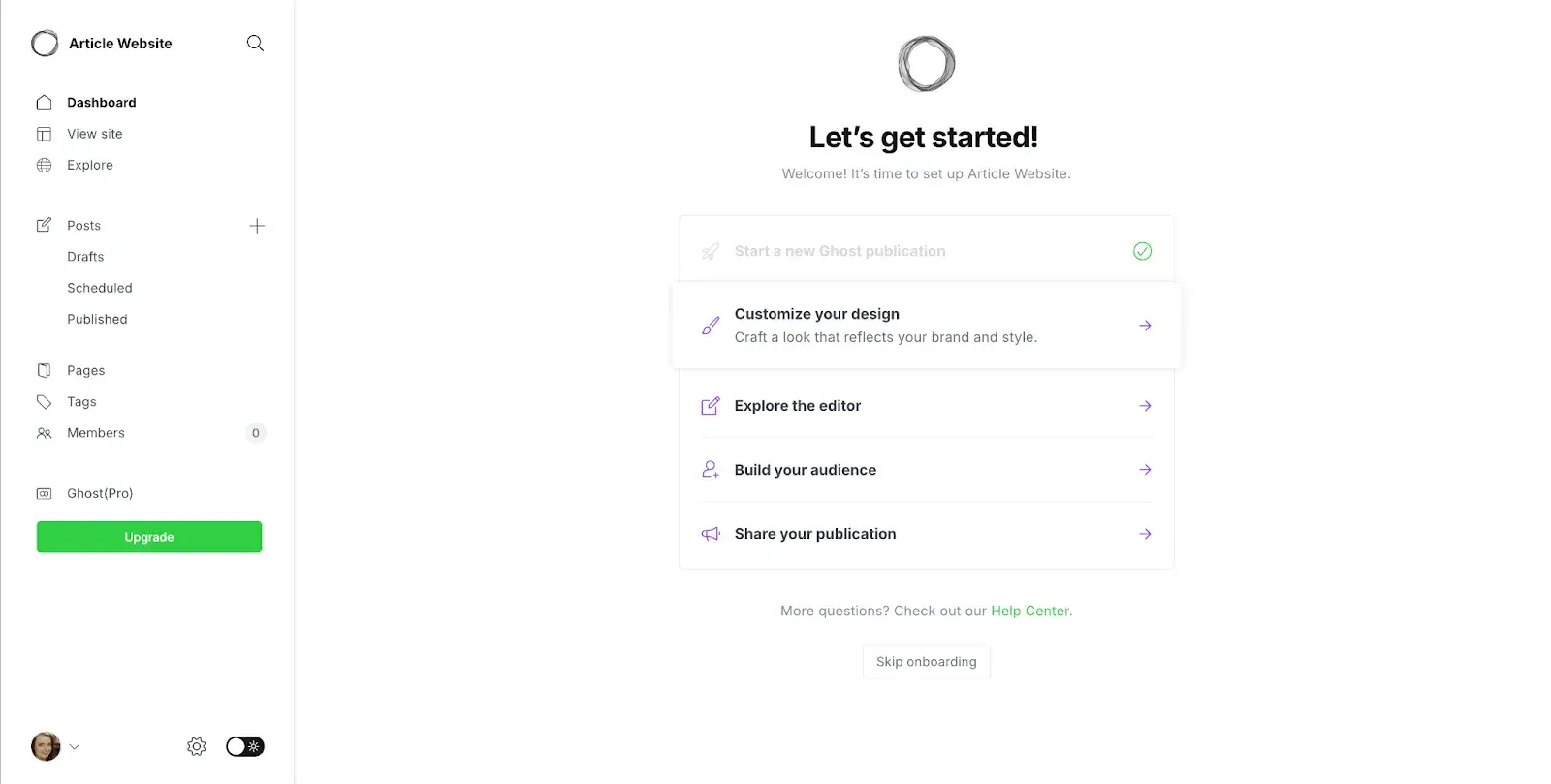
You can customize your site’s homepage and the design of individual articles. The editor for individual articles is very easy to use, with options to add everything from images and markdowns to products, call-to-action buttons, and embeds from platforms like YouTube and Spotify.
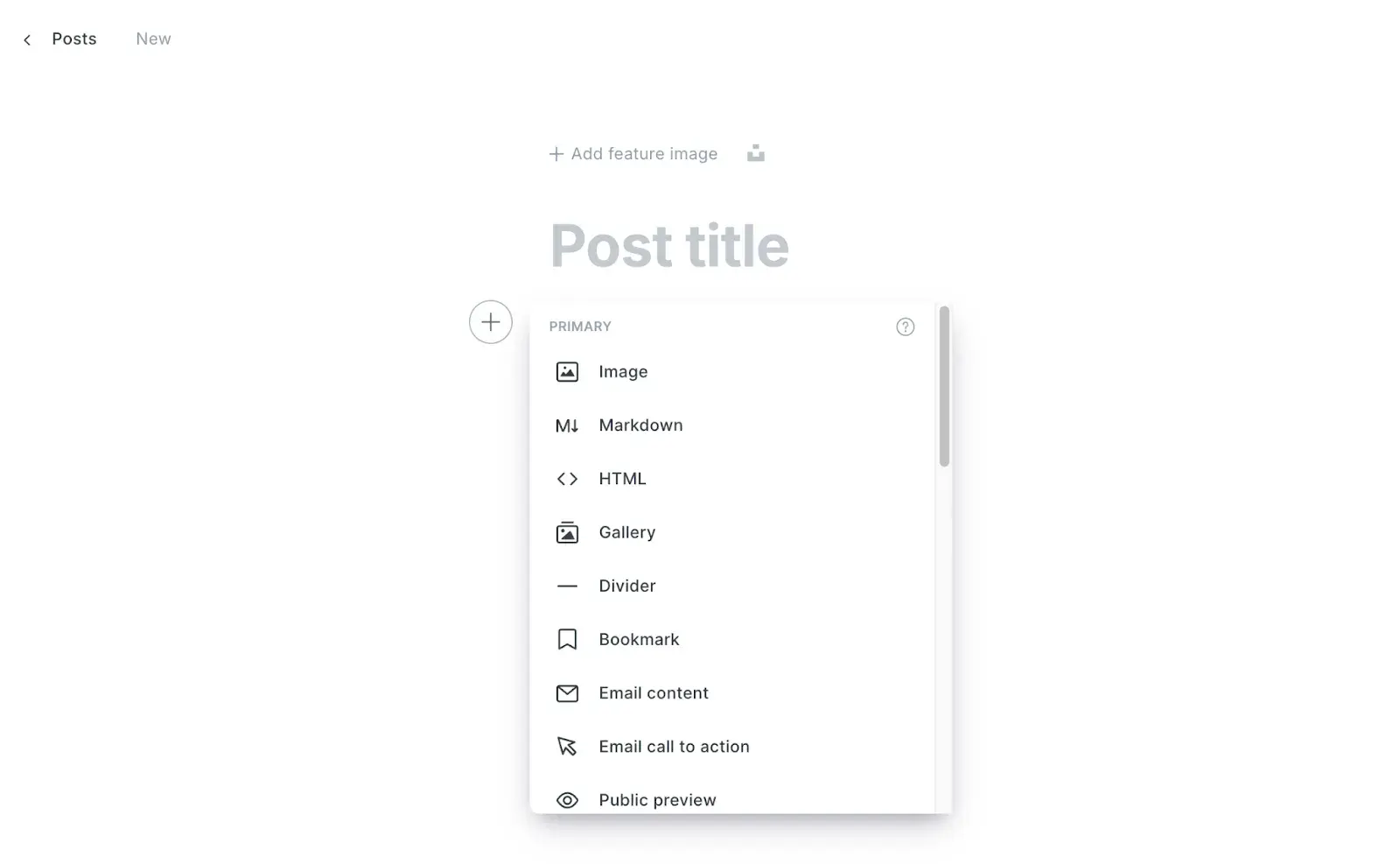
Features
- Sleek design and customization options
- Built-in membership and subscription management features for monetization
- Built-in analytics to track performance
- Advanced content editor
What I Like: I can see Ghost being ideal for creators who also want to manage content and monetization through their own websites. Ghost gives you pretty much everything you would need for this use case. That being said, the fact that it’s specific to blogging and articles means it’s not super adaptable for other content types.
The Right Cloud-Based CMS Can Transform Your Content Strategy
With AI quickly getting integrated into our day-to-day technology, it’s easy to see that a cloud-based CMS can transform a business’s content strategy. From ramping up production to providing better engagement and analytics, a cloud-based CMS is an essential tool for today’s digital content strategies. All of the platforms I tried have either a free version or a free trial available. So, dig in and try them out for yourself!
Content Management System


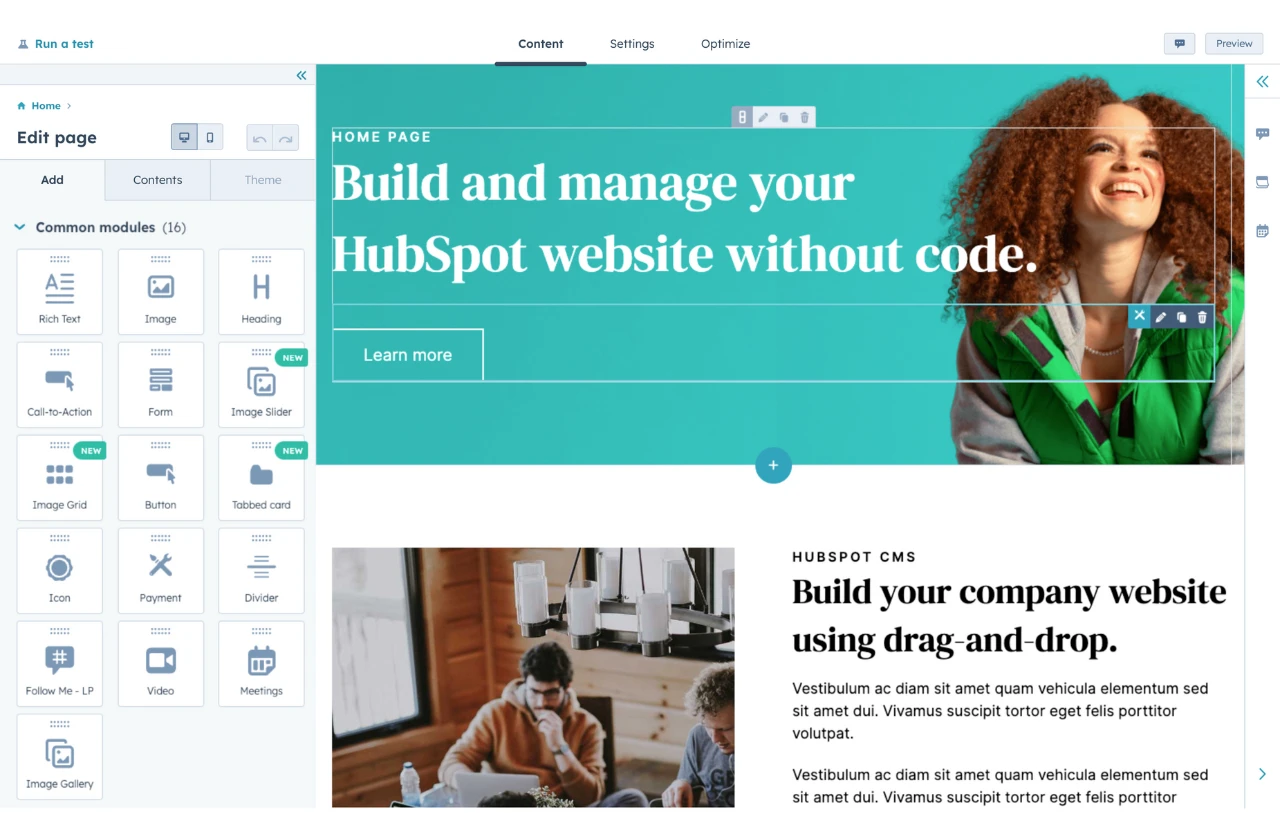





![20 Best Membership Website Builders and Platforms [+My Favorite Examples]](https://53.fs1.hubspotusercontent-na1.net/hubfs/53/14%20Best%20Membership%20Website%20Builders%20and%20Platforms%20in%202022%20%5B+%20Website%20Examples%5D.png)



